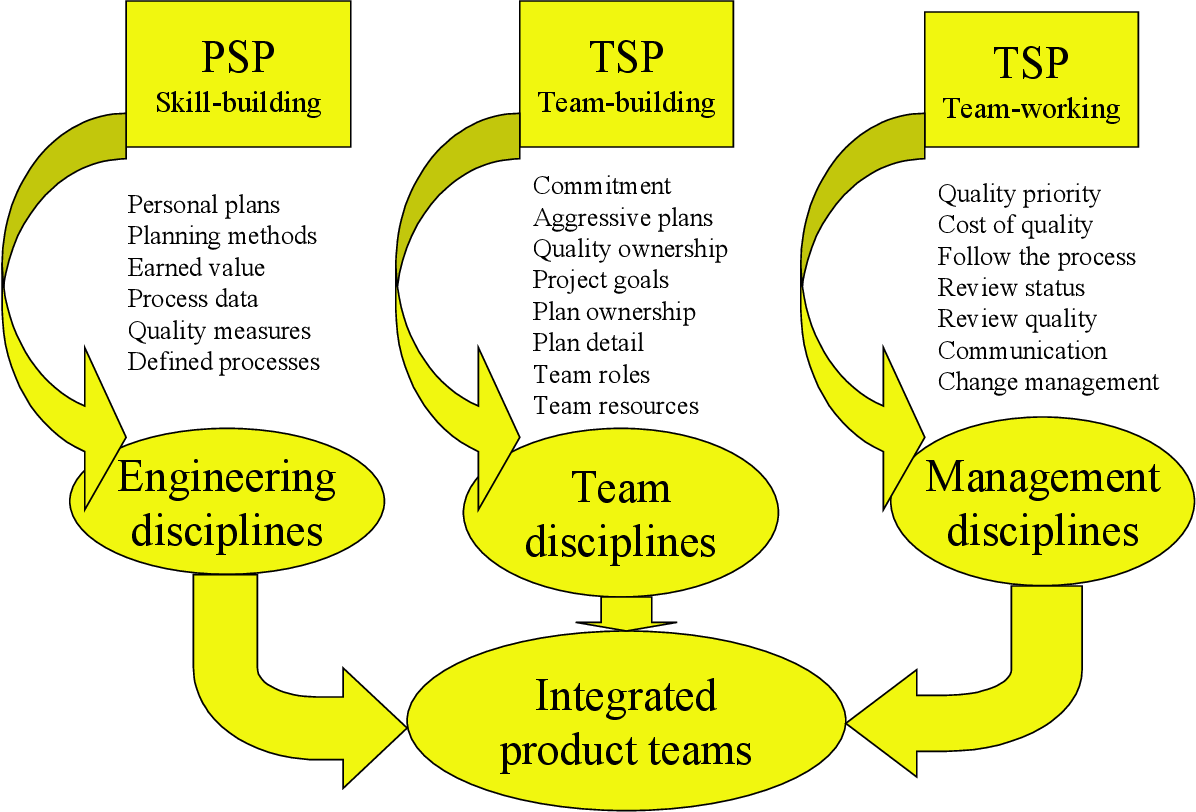Team Software Process, a structured approach to software development, focuses on improving teamwork and productivity. By following specific phases, roles, and utilizing tools effectively, teams can streamline their processes and deliver high-quality software products. This article delves into the key aspects of Team Software Process to provide a comprehensive understanding of its implementation and benefits.
Introduction to Team Software Process
Team Software Process (TSP) is a structured framework designed to improve the quality and productivity of software development teams. It focuses on enhancing teamwork, communication, and overall efficiency in the software development process.
Key Components of Team Software Process
- Team Formation: TSP emphasizes the formation of well-organized and skilled teams with clear roles and responsibilities.
- Planning and Tracking: Detailed planning and tracking of tasks, schedules, and progress are essential components of TSP to ensure project success.
- Quality Management: TSP integrates quality management practices to maintain high standards throughout the development lifecycle.
- Process Improvement: Continuous process improvement is a core principle of TSP, encouraging teams to learn from their experiences and optimize performance.
- Risk Management: TSP includes risk management strategies to identify, assess, and mitigate potential risks that may impact project delivery.
Importance of Implementing Team Software Process in Software Development
Implementing TSP in software development brings numerous benefits, including:
- Improved Team Collaboration: TSP fosters better collaboration among team members, leading to enhanced communication and shared goals.
- Enhanced Productivity: By following a structured process and best practices, TSP helps teams streamline their workflow and increase productivity.
- Higher Quality Software: With a focus on quality management, TSP ensures that software products meet high standards and customer expectations.
- Greater Project Success: TSP’s emphasis on planning, tracking, and risk management contributes to higher project success rates and on-time delivery.
Phases of Team Software Process

Team Software Process (TSP) consists of multiple phases that are crucial for the successful development of software products. Each phase involves specific activities to ensure that the project is completed efficiently and with high quality.
Planning Phase
In the planning phase of TSP, the team defines the project scope, sets objectives, and creates a detailed project plan. This phase includes activities such as requirement analysis, resource allocation, and risk assessment. The goal is to establish a solid foundation for the project and ensure that all team members are on the same page regarding the project goals.
Development Phase
During the development phase, the team works on implementing the software design according to the requirements specified in the planning phase. This involves coding, testing, and debugging to ensure that the software functions correctly and meets the quality standards set for the project. Collaboration among team members is essential during this phase to address any issues that may arise and to ensure that the project stays on track.
Integration Phase
In the integration phase, the individual components developed by team members are combined to create the final product. This phase involves testing the integrated software to identify and resolve any inconsistencies or errors that may occur when different components are combined. Communication and coordination among team members are critical during this phase to ensure that the final product meets the requirements and functions as intended.
Delivery Phase
The delivery phase involves finalizing the software product and delivering it to the end-users. This phase includes activities such as user training, documentation, and support to ensure that the users can effectively use the software. Feedback from users is also collected during this phase to make any necessary improvements or updates to the software.
Overall, the phases of Team Software Process focus on collaboration, communication, and quality assurance to ensure the successful development and delivery of software products. Compared to other software development methodologies, TSP places a strong emphasis on team dynamics and individual accountability, which can lead to higher quality products and more efficient project delivery.
Roles and Responsibilities in Team Software Process

In a Team Software Process, there are various roles that team members take on to ensure the successful completion of the project. Each role comes with specific responsibilities that contribute to the overall effectiveness of the team.
Project Manager
The Project Manager is responsible for overseeing the entire project, including planning, scheduling, and coordinating team members. They are also in charge of communication with stakeholders and ensuring that the project stays on track.
Software Developer
Software Developers are responsible for writing code, testing software, and debugging any issues that arise during the development process. They work closely with other team members to ensure that the software meets the project requirements.
Quality Assurance Engineer
Quality Assurance Engineers are responsible for testing the software to ensure that it meets quality standards. They identify and report any issues or bugs to the development team for resolution before the final release.
UI/UX Designer
UI/UX Designers are responsible for creating the user interface and user experience design of the software. They focus on making the software visually appealing and user-friendly to enhance the overall usability.
Technical Lead
The Technical Lead is responsible for guiding the technical direction of the project. They provide technical expertise to the team, make critical decisions, and ensure that the project follows best practices and standards.
Clear roles and responsibilities within a team are essential for the success of the Team Software Process. When each team member understands their role and the responsibilities associated with it, there is better coordination, communication, and efficiency in the project. This clarity helps in avoiding confusion, overlapping tasks, and delays, ultimately leading to a more streamlined and successful software development process.
Tools and Technologies for Team Software Process
Implementing Team Software Process requires the use of various tools and technologies to facilitate collaboration and communication within the team. These tools play a crucial role in improving team productivity in software development.
Version Control Systems
- Git: A distributed version control system that allows multiple developers to work on the same project simultaneously, keeping track of changes and merging code efficiently.
- SVN (Subversion): Centralized version control system that helps teams manage and track changes in the codebase.
Project Management Tools
- Jira: A popular tool for agile project management, enabling teams to plan, track progress, and collaborate on tasks and issues.
- Trello: A visual project management tool that helps teams organize tasks, set priorities, and track project status in a flexible and intuitive way.
Communication Platforms
- Slack: A messaging platform that allows teams to communicate in real-time, share files, and integrate with other tools for seamless collaboration.
- Microsoft Teams: Collaboration platform that combines chat, video meetings, file storage, and app integration to enhance team communication and productivity.
Challenges and Solutions in Team Software Process
Implementing Team Software Process can come with its own set of challenges that teams need to address in order to ensure successful outcomes. Let’s explore some common challenges and effective solutions to overcome them.
Communication Breakdown
Effective communication is crucial in a team software process, and breakdowns in communication can lead to misunderstandings, delays, and errors. To address this challenge, teams can implement regular status meetings, utilize collaboration tools for real-time communication, and encourage open and transparent communication among team members.
Lack of Clear Roles and Responsibilities
When team members are unclear about their roles and responsibilities, it can result in duplication of work, conflicts, and lack of accountability. To overcome this challenge, teams should establish clear roles and responsibilities for each team member, define expectations, and ensure everyone understands their contributions to the project.
Inadequate Planning and Estimation, Team software process
Poor planning and inaccurate estimation of time and resources can lead to project delays, budget overruns, and poor quality deliverables. To tackle this challenge, teams should invest time in thorough project planning, break down tasks into smaller manageable units, and use historical data and expert judgment for accurate estimation.
Resistance to Change
Resistance to change within the team or organization can hinder the adoption of new processes and practices, including Team Software Process. To address this challenge, teams can emphasize the benefits of the new process, provide training and support to team members, and involve them in decision-making processes to increase buy-in and commitment.
Closing Summary

In conclusion, Team Software Process offers a systematic framework for teams to work cohesively, address challenges, and enhance overall project outcomes. By embracing clear roles, utilizing appropriate tools, and overcoming obstacles proactively, teams can achieve success in software development projects.
